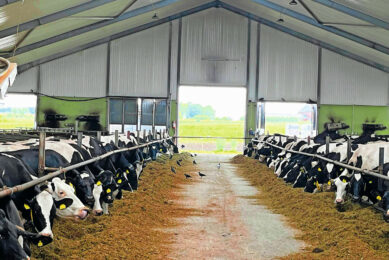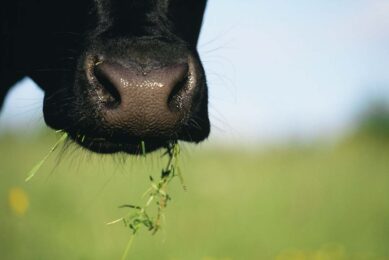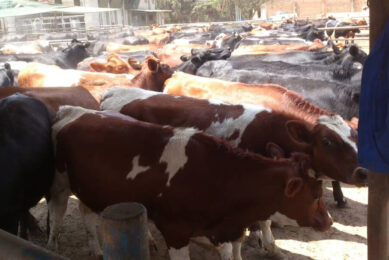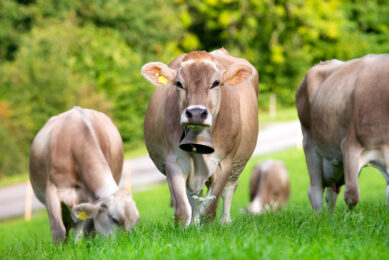Swedish organic farm to grow and broaden
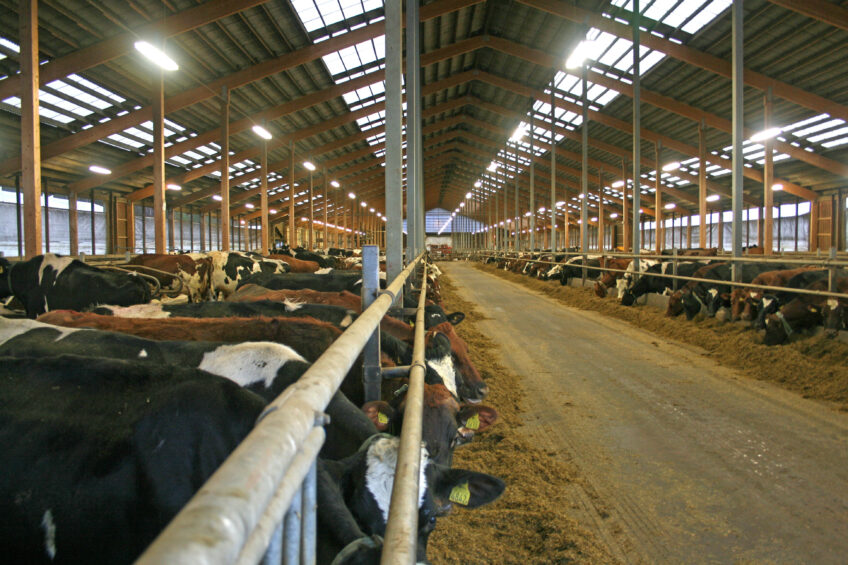
The Swedish farm Vadso Mjölk rapidly increased its number of cows and, for now, has found an optimal balance. 2 years ago they invested in biogas. It is profitable and ties in with the organic farm.
The open agricultural area surrounding Mariestad is characterised by large parcels of barren arable land, alternated with grassland. The landscape is filled with the typically Swedish red buildings. The big dairy farm Vadso Mjölk has a striking appearance here; the gigantic silo’s and the large cowsheds with 1,700 livestock show more resemblance with an American than a Swedish farm. The company was built in the late 90s on an empty field. The farm continuously expanded with a solid growth plan. The total production of the more than 1,300 dairy cows averages at 12 million kilograms organic milk per year. In addition to dairy, the company has a strong land position for their own roughage and concentrates production and production of arable crops.
|
The farm’s biogas location is situated about 1.5km from the main location. Its appearance is just as striking: 2 large domes stand out starkly against the grey sky. A dissuasive fence is there to ensure unauthorised persons have no access to the location. “2 years ago we built the biogas installation,” says Lars Svensson, manager of the dairy company. The farm Vadso Mjölk is in the hands of 8 partners. A new legal entity was set up for the biogas installation, of which Vadso Mjölk owns half of the shares. The other half is in hands of a Finnish energy company. Mr Svensson explains the investment fits into the developmental strategy; the dairy farm has continuously grown and now runs optimally. With the installation the entrepreneurs annually generate 1,000 tonnes biogas. The raw gas from the installation is cleansed of carbon monoxide and sulphur and is compressed. The clean gas is then transported to the final user; mainly buses in the city Karlstad. “Thanks to the manure we produce, 1,800 cubic meters of diesel is saved.”

Utilising nitrogen
According to Mr Svensson, bio-fermentation is well suited to the organic way of farming. The farm has been organic almost since its foundation. The input of nitrogen for sufficient grass and crop growth is important, as use of mineral fertilisers is not allowed. Fermentation increases the share of mineral nitrogen. The nitrogen utilisation is also higher than with regular slurry. The installation produces about 75,000 cubic meters digestate per year. He expects it to be beneficial for the amount of organic substance in the soil. It is also easier to put together an optimal fertilisation, in combination with other sorts of liquid manure.

Also the return is good, in part due to a subsidy of the Swedish government. His bosses have forbidden Mr Svensson to share the precise numbers, but he calls it an interesting branch in relation to the investment and amount of labour. The government may also be thanked for that. “Without subsidy we would break even at best.” The government’s contribution amounts up to approximately € 0.04 per kW. At a production capacity of 11 million kW the farm received € 450,000 on its bank account. The subsidy only applies to the supply of slurry. Mr Svenssons says he is confident the subsidy will stay. The amount is uncertain however. “It changes each year and depends on the total number of applications. The more biogas that is produced in Sweden, the less we receive.”

Raw material streams for the fermenter
At the time of the visit, it was quiet on the fermentation location. The 2 permanent employees are almost done for the day and were making their last round. There is an online connection with the mother company and the gas company, which partly owns it, to monitor the process. This gas company also has specific expertise on optimising the fermentation process. The cleaning process is a particularly important factor in keeping the quality of gas constant. Several streams of raw materials are used for the fermenter. This produces the greatest returns, according to Mr Svensson. The main raw material of course is the company’s own manure. The slurry is collected from the sheds, is stored temporarily and pumped via a 1.5km long piping system in a straight line towards the fermenter. The Swedes pump about 150 cubic meters per day. “It is a large operation, but we now make substantial savings on manure transportation.” In addition to the manure produced on the farm, manure of sows owned by one of the owners serves as a resource. They also deliver residuals from Arla’s dairy plant with their own transport. With their own truck, feed residues are collected from the pits, their own feed plant and from the shed, and transported to the fermenter. A daily total of about 210 tonnes organic material disappears in the always hungry fermenter.

Better return on organic products
According to Mr Svensson, the fermenter is a fitting piece of the puzzle in the farm structure. With its 1,340 organic cows and 2,600 hectares land the farm is very extensive. The large amount of land also relates to the low production level of the land. “This region is known for it, back then it was one of our reasons to switch to organic production.” He mentions a proper building plan and fertilisation as important critical success factors. And the fermenter contributes to this. Mr Svensson doesn’t expect the farm structure to change that much in the years to come. The organic sector is also flourishing in Sweden, despite the fact that dairy products experience price suppression. Yet he expects to be more profitable than with regular products. He also can’t say a word about the milk and cost price and the margins, but he gives the impression the milk price is not far off the price of competitor Arla. Year-end 2017 the Scandinavian dairy giant paid about € 50 per 100 kg milk; this is € 12 above the regular price.
Feed costs are strong point
The feed costs are one of the company’s strengths; all but a few bags of minerals are cultivated on soil, protein raw materials such as beans included. The cows are kept in four groups. Each group is fed a mixed ration of their own. Costs for building are, with an investment of € 5,000 per location, relatively low. Plus, there is a strong focus on easy and efficient labour. The manager expects the farm to show a steady growth, which means the number of cattle as well as the amount of land will increase. That is not a problem. “In the region there is more than enough land for sale and in the years to come many more small dairy farmers will get out of farming.”With land prices varying between € 12,000 and € 18,000 per hectare land is still very affordable. Besides, the amount of land per cow is largely an organic requirement; according to the legislation there is no obligation. The Swede expects the maximum number of cattle for this location to be between 1,800 and 2,000. The 60 stands external milking parlour is the limiting factor in this. “With 2 shifts per day we are now able to milk more than 1,300 cows. If we add another shift to that, the milking rotary is optimally full.”
Join 13,000+ subscribers
Subscribe to our newsletter to stay updated about all the need-to-know content in the dairy sector, two times a week.


 Profile
Profile

